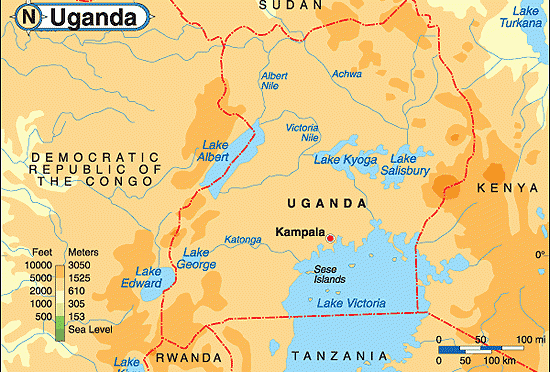According to Uganda’s renewable energy policy 2007, wind data collected by the country’s meteorology department concluded that wind energy is available and sufficient for power generation especially in the south western part districts of Kabaale, Ntungamo, Kisoro and around Mt Elgon,Karamoja areas with the average wind speed at 4m/s(meters per second).
Wind energy potential can therefore be harnessed as an alternative power source and for diversification of Uganda’s power sector.
Uganda is set to spend sh1,711.7b in the financial year 2014/15 to fast track the construction of the 600mw Karuma and 188mw Isimba hydro power plants, as the country steps up efforts to increase power supply and redeem its ailing power sector. However, reliance on hydro-power, which provides 80% of the country’ 870 mw installed grid capacity has plunged Uganda into years of chronic power shortages, load shedding and low levels of power penetration, especially in the rural areas.
Effects of climate change, as well as environmental degradation around the L. Victoria have continuously undermined the hydrology on river Nile, decimating the power generation capacity of plants along the river, a situation that has brought about power supply shortages in the country. Uganda, which has one of the highest population growth rates in the world, already cannot keep pace with its energy demands by relying on a single power source. It’s thus clear that an expanded and diversified range of renewable power sources is critical in solving the above problems.
One promising Ugandan entrepreneur, Samuel Ogutu working under the Uganda Veterans Wind Power Initiative has already made wonders with a pilot wind energy project in his native Koome islands, Mukono district. Using locally sourced materials, wood and iron sheets, Mr. Ogutu is making blades, generating enough electricity to supply several homes, on this island that is not connected to the grid. With support, the Uganda Veterans Wind Power Initiative would really go a long way in delivering power to Ugandans, especially those in rural areas without access.
In neighboring Kenya Wind energy has achieved relatively high levels of penetration with installed capacity to the grid 5.45mw. The ongoing construction of a 380 turbine wind farm in the northern district of Turkana, Kenya’s national power supply is set to more than double. Wind energy is a clean energy source, environmental friendly and thus promotes Article 39 of Uganda’s constitution the right to a clean and healthy enviroment.Wind turbines don’t produce atmospheric emissions that cause green house gasses responsible for global warming effect, unlike burning of wood fuel that characterizes most rural households.
Government continues to ignore its own policies and legal requirements to diversify energy sources and provide its people with clean, reliable and affordable power.
Access to such power has thus remained a dream to many Ugandans. Parliament should therefore strengthen its oversight over the Ministry of Energy and Mineral Development and lay emphasis on exploitation of alternative clean energy sources, especially wind to increase electricity generation capacity and utilization clean energy sources.
The writer works with Africa Institute for Energy Governance
By Diana Taremwa

